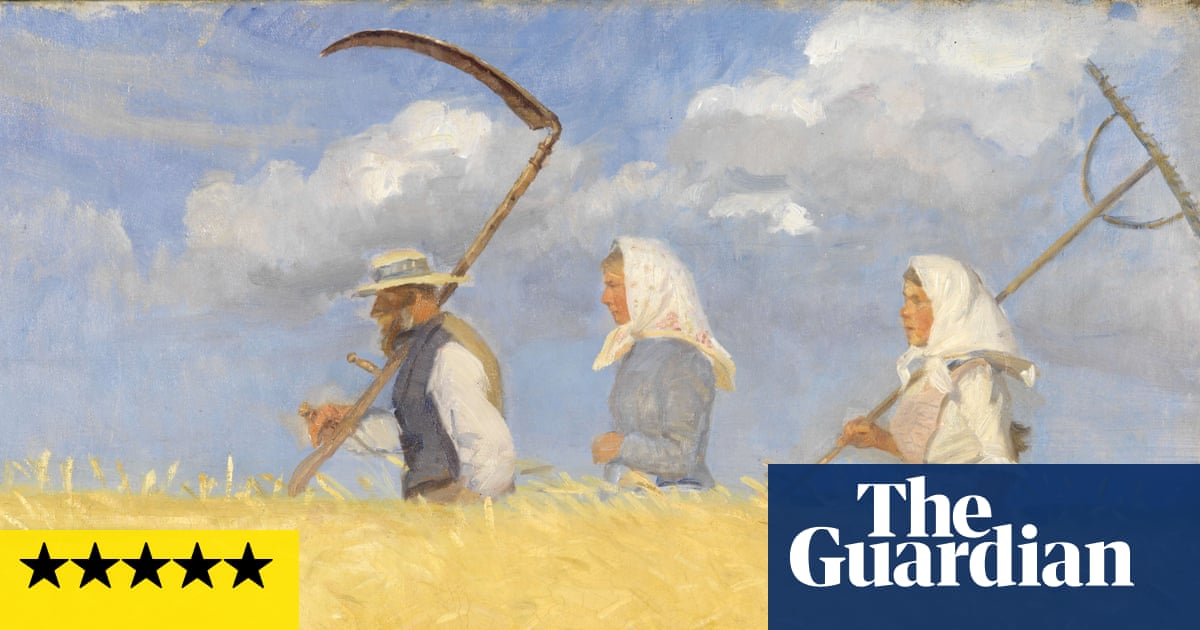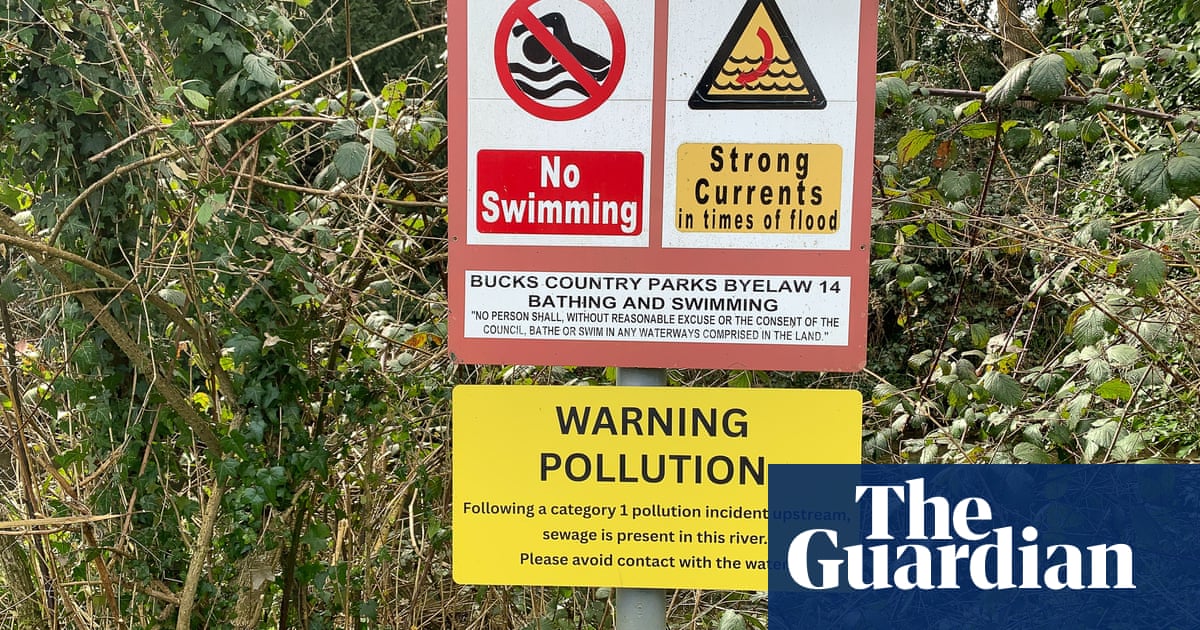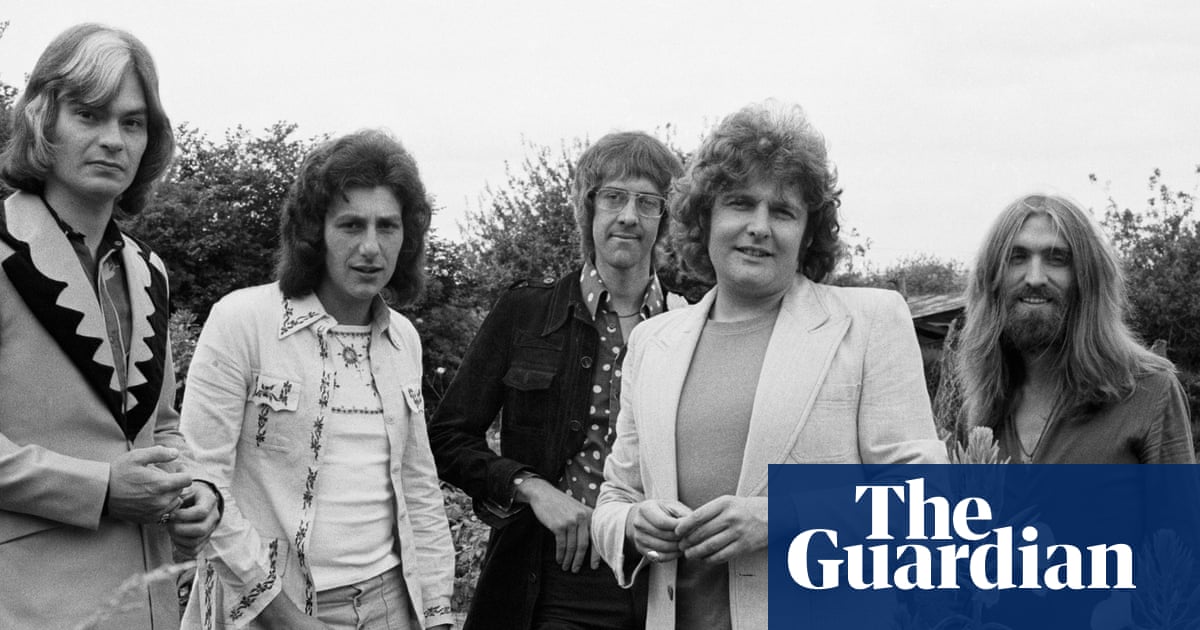In this moment of cultural panic about the decline of reading, it takes an enviable confidence to deliver a volume such as Tom’s Crossing. Weighing in at more than 1,200 pages of closely printed text, the novel contains, I would hazard, about half a million words – roughly two Ulysses. It’s also, for that matter, about twice the length of Danielewski’s debut, House of Leaves, which secured cult status for its author on publication 25 years ago. Tom’s Crossing is so big that when I got it out on the tube, I felt like that character on Trigger Happy TV with his enormous mobile phone. “Look,” I seemed to be telling the passengers scrolling Instagram on their devices, “I’m reading a book!”
The novel is not merely long, it’s also a challenging, deliberately arcane work that insists on its own epic status, yet has at its heart a straightforward and compelling story. Kalin March, a 16-year-old nerdy outsider in the town of Orvop in Utah, is a preternaturally talented horse rider. Through a shared love of horses, he strikes up an unlikely friendship with handsome and popular Tom Gatestone.
When Tom dies of cancer, he extracts a promise from Kalin to save the two horses they love from the knacker’s yard. The bulk of the novel tells the story of Kalin’s quest to take these horses, Mouse and Navidad, to safety in the wilderness beyond the Isatch mountain range. Along the way, Kalin is joined unexpectedly by Tom’s plucky adopted little sister Landry and, even more unexpectedly, by Tom’s ghost. A violent series of events raises the stakes: the evil Orvop patriarch, Orwin Porch, owner of Porch Meats, and mortal enemy of the Gatestones, sets off to foil Kalin’s already difficult mission.
This bald summary doesn’t do justice to the ambition of the book or the brilliance of its plotting. The events take place over a five-day period leading up to Halloween, 1982. Purely as story, Tom’s Crossing hits a western-inflected cinematic sweet spot, with a 1980s setting, young central characters and sweeping landscapes. There are guns, horses, ghosts, a primal struggle for survival in hostile terrain, family feuds and a steadily intensifying sense of mortal threat, as Old Porch’s ambition and psychopathy escalate the drama. And the compressed timeframe of the story ticks down to a hugely satisfying climactic encounter in the mountains.
And yet, for all its obvious virtues, I found Tom’s Crossing a baffling and often infuriating experience. Danielewski is a writer of enormous power and vision. He has invented a gripping story with mythic undertones that need no extra emphasis. Yet he makes a number of aesthetic choices that seem deliberately designed to frustrate normal enjoyment of the novel. One of these is the conceit, established on page one, that the epic events described in the book are already widely known. At umpteen points in the novel, we cut away from the action and explore the thoughts and attitudes of a vast chorus of named characters who have used moments in the story as the basis for their own artworks: opera, songs, sculptures, drawings, art installations. We hear about these in mindboggling detail. There are so many of these choric figures – at one point, a thousand or so names are simply listed in the text without comment – that I wondered if they belonged to Danielewski superfans who had crowdfunded the novel.
The other decision that struck me as perverse is the narrative voice of the book. The novel purports to be the transcription of an oral account of the events it relates. The voice reproduced on the page is a weird mixture of Homeric and hayseed, dropping terminal “g” on participles, using double negatives, now and again rendering for as fer, yet conversant with arcane words such as cynegetic, rupestral, epicrisis, noctilucent and teichoskopia. The result is prolix and wandering and makes a long book feel much longer.
“Earlier that afternoon, when for some reason Allison’s thoughts had angrily returned to the curse she’d laid upon Kalin before he’d left, warnin him from guns, makin it clear by insubstantial decree that even handlin a gun might cost him the horses he loved, and for the rest of his life, she and Sondra had returned to the Isatch Canyon parkin lot, where they’d promptly learned about the great rockfall.”
This passage is one of the shorter and less challenging sections of the novel, but there’s still something characteristically inconsiderate about the way it’s constructed. The warning about the guns – though pertinent to the plot – has nothing to do with the unfolding action. In fact, it just distracts the reader from the essence of this paragraph which is: Allison and Sondra went back to the Canyon and learned about the rockfall.
Why not say it like that? Well, the narrator’s voice is committed to its special idiolect, with repetition, slang and its own winding rhythms. Space prevents me quoting the weirdest examples at length, but at times it reads as though the Stranger from the film The Big Lebowski is channelling the brambly 17th-century prose of John Milton or Thomas Browne. The Stranger, you’ll remember, has a gravelly voice and a big hat, and is prone to saying things such as: “I guess that’s the way the whole durned human comedy keeps perpetuatin itself down through the generations. Westward the wagons, across the sands of time, until we – ah! Look at me, I’m ramblin again.” Throw in a reference to the Iliad and an obscure adjective, say, quaquaversal, and this is basically the voice of Tom’s Crossing.
after newsletter promotion
This narrator – whose implausible identity we learn late in the book – also possesses a kind of hyperomniscience. There is deep knowledge about – off the top of my head – horse riding, geography, geology, myth, Mormon scripture, card games, land development, 1980s music, modern art, guns, outdoor survival and the conventions of classical literature. Furthermore, every moment in the story is exploded into second-by-second detail, irrespective of its importance to the plot. On occasions, this is sublime and thrilling. Danielewski’s ability to visualise and convey unfolding action is amazing. At other times, I was scratching my head as we disappeared down another extended digression, wondering why I was being told so much about minor characters and their irrelevant enthusiasms.
In the end, Tom’s Crossing feels as though it’s been written with at least one eye on the literary immortality bestowed by academic study. Its aesthetic decisions seem designed to stimulate seminars rather than enjoyment. And to be fair, Danielewski doesn’t hide the book’s challenges: a glance at the novel’s first page will let readers know what they’re in for. Less obvious is that beneath the carapace of difficult writing and literary allusion, there’s the gratifying gooey centre of a blockbuster PG western, with limited nudity, violent scenes and oddly simple moral choices.

.png) 5 hours ago
6
5 hours ago
6

















































